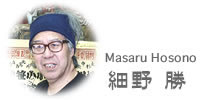|
| The signboard in Japan can be traced back to the year of 701,when
the Taiho Law Code was established. There's a description that reads "When one opens a fair in a city every month the items of merchandize must be shown on some sign." 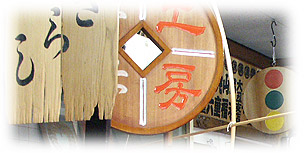 The signboard that had existed in Japan is said to have been the one found in the Kamakura period. Since then there appeared signboards witch easily expressed shop items and, at the time of the Kanbun Years(1661-1672), the Kanji signboard became popular. In the Edo period, signboards with puns or play on words that included Kanban Musume (sales girls) and Kanban O Orosu (close up a store) started to appear. These are still in use in daily life.I can conclude by saying that the signboard is a past of Japanese culture that combined craft and writings as well as the merchant's puns or play on words and his highly business-minded sense. |
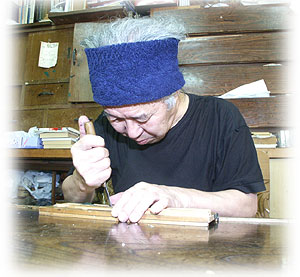 Tell us about your job. Tell us about your job.I'm engaged in the work of signboard carving for the most part. 90% of my work is Senjagaku (interior signs that are used in Japanese restaurants as menus) and the other 10% is signboards used as name plats, Coasters and small accessories. The materials used for signboards are Kiso Cypress, Keyaki tree and American cedars. Except for the Cutting of the materials I do everything-from writing the characters to carving to painting. 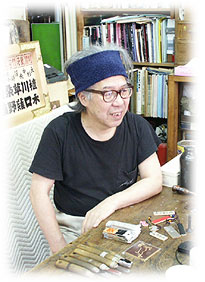 These are done all by myself. After accepting orders, it will take us to about one month to complete the work but some of the works take as many as two month's to finish. How did you start your job? My father used to work for Sushi shop as a sushi man in the Yokohama area, so I often visited the Tsukiji area, (where the morning fish market is) in my early days, where I happened to catch sight on a signboard shop. As I didn't care much for handling food as a basic job I wanted to work in a shop where I could make something using my hands. 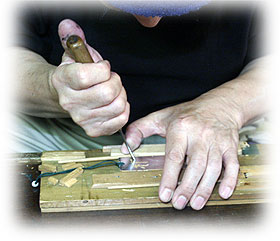 I made up my mind to begin an apprenticeship at the Signboard shop. After finishing middle school, I started my job as an apprentice at the shop in Tsukiji. It has almost been 50 years since then. What's your future plan? It's my hope that by all means, traditional culture and techniques be passed down. 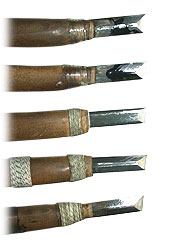 The signboards in the Edo
period are an accumulation of smartness and puns (or a creation of smartness and the
puns). The signboards in the Edo
period are an accumulation of smartness and puns (or a creation of smartness and the
puns).Among the craftsmen, those who were not able to understand the jokes or wordplays in daily conversation used to be given a cold shoulder by their coworkers. The real traditional was built not only the people of high rank, but also has been created by the towns-people who enjoyed jokes and puns. 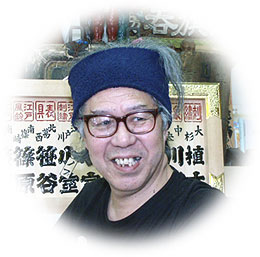 The techniques that I now
know have been accomplishments done by many craftspeople, it would be very deplorable if
such techniques didn't survive into the next generation. The techniques that I now
know have been accomplishments done by many craftspeople, it would be very deplorable if
such techniques didn't survive into the next generation.In the future we craftspeople would like to challenge making something new, and hope that Japanese people know more about the traditional culture and skills. |

